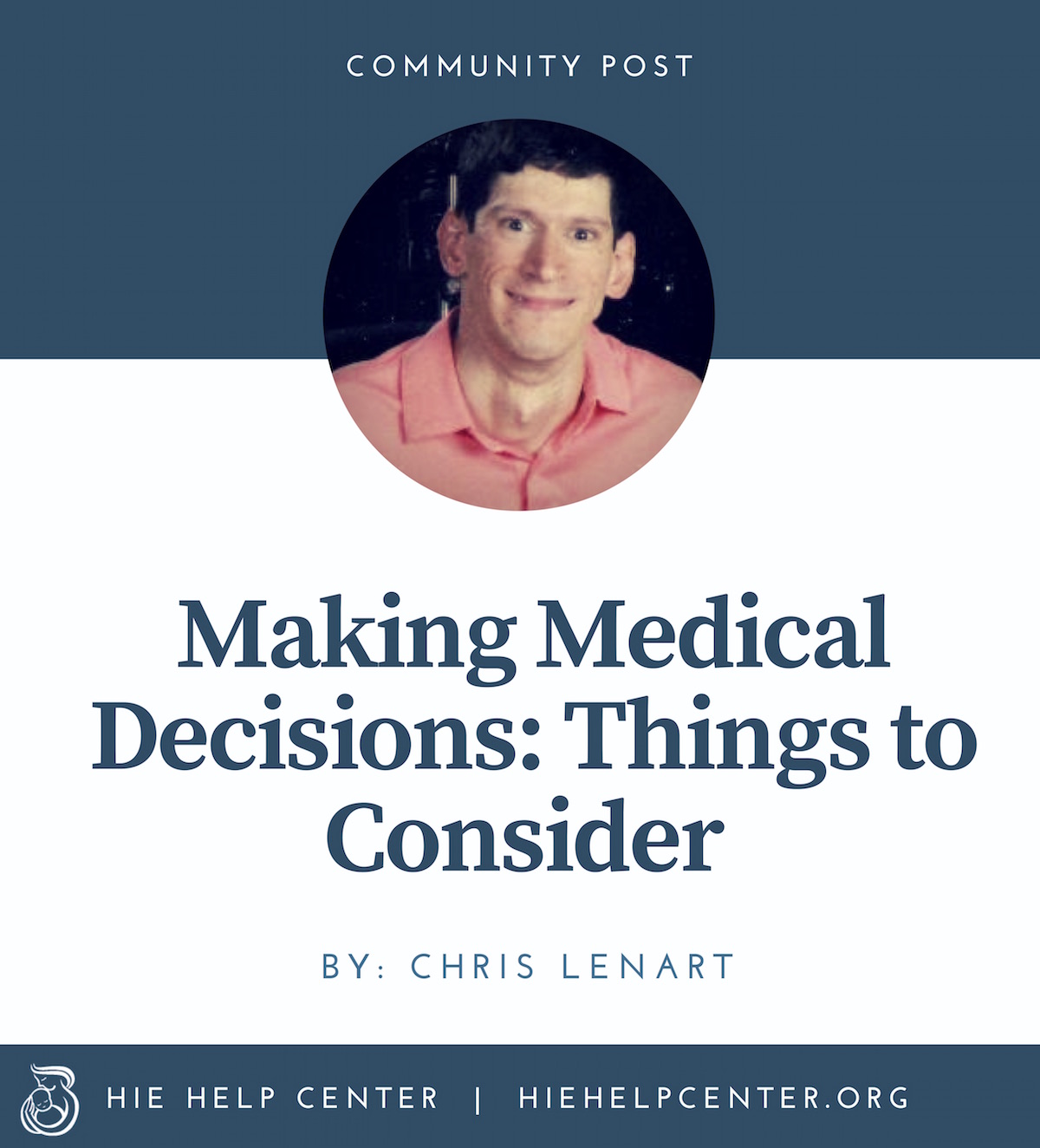By: Guest Contributor Chris Lenart
Before I start this post for the month, I have to say that I am not a doctor or planning to be one. I wrote this post to share my experiences and opinions. If you are a parent of a child with cerebral palsy, you and your child’s medical team know your child best. I just want to give you a different point of view to think about and discuss with your family. Let’s get started.
Let’s say that your child goes to therapy and the therapist suggests that you should see a surgeon because your child’s hamstrings are getting tight or something else is not right. You want your child to be independent as possible, but you don’t want your child to go through all the pain and all the drama. So, what do you do?
That’s a good question. First of all, go and see what the surgeon says. Your child’s therapist may even be able to be with you when you meet with the doctor. This was what took place when my parents were deciding if I should have the operation on my hamstrings. After we weighed the benefits, my parents asked me if I wanted the cerebral palsy operation. I decided to have it.
Now I want to talk about the process of making the decision to undergo a medical procedure. Here are a few of my thoughts, experiences, and opinions on the matter:
- What is the nature of the procedure itself? Many procedures, like tendon release surgeries or SDR, have been around for years and are generally approved by the medical community and FDA. When they’re indicated, doctors will typically recommend them. However, newer treatments and therapies may still be in experimental stages. One type of therapy getting a lot of attention is stem cell therapy. I recently watched a few videos about families who have children with cerebral palsy; these families have to evaluate the risks associated with the procedure, confront the out-of-pocket costs, and think about the fact that they may not work.
- Costs: Medical procedures are expensive, even with insurance. Experimental treatments or alternative therapies may not be covered by insurance, so families may want to discuss finances in the decision-making process.
- Your child’s expectations: Not all therapies and treatments work as planned, so many families benefit from having an open discussion with their children about their expectations, their rehabilitation goals, and their mentality about disability. For example, one of the families I researched had a four-year-old daughter who wanted to be a dancer, so they turned to stem cell therapy to help her achieve her goals when other therapies failed or progressed too slowly. I believe families like this should openly discuss their child’s diagnosis, dreams, and expectations before the treatment to avoid getting their hopes up. It’s great to see parents doing everything they can to help fulfill their children’s dreams, but dreams can change over the years, and various other therapies can have great cumulative effects over longer periods of time. It’s unique for each family and each child.
I consider my cerebral palsy diagnosis to be a gift, and it made me who I am. Don’t I get angry when I can’t do what I want? Absolutely! But cerebral palsy is a part of who I am. There are many people with cerebral palsy who would say the same thing too. It is the same with your child. I am not saying don’t try to improve your child’s life, but just the opposite, help your child to be the best with cerebral palsy.
These are all considerations that helped my family and me make informed decisions for operations medical procedures.
Related Reading:
- Meet Chris Lenart
- Chris Lenart: 4 Misconceptions About Raising a Kid with CP
- Chris Lenart: Summer Activities for Kids with Cerebral Palsy



Leave a Reply
You must be logged in to post a comment.